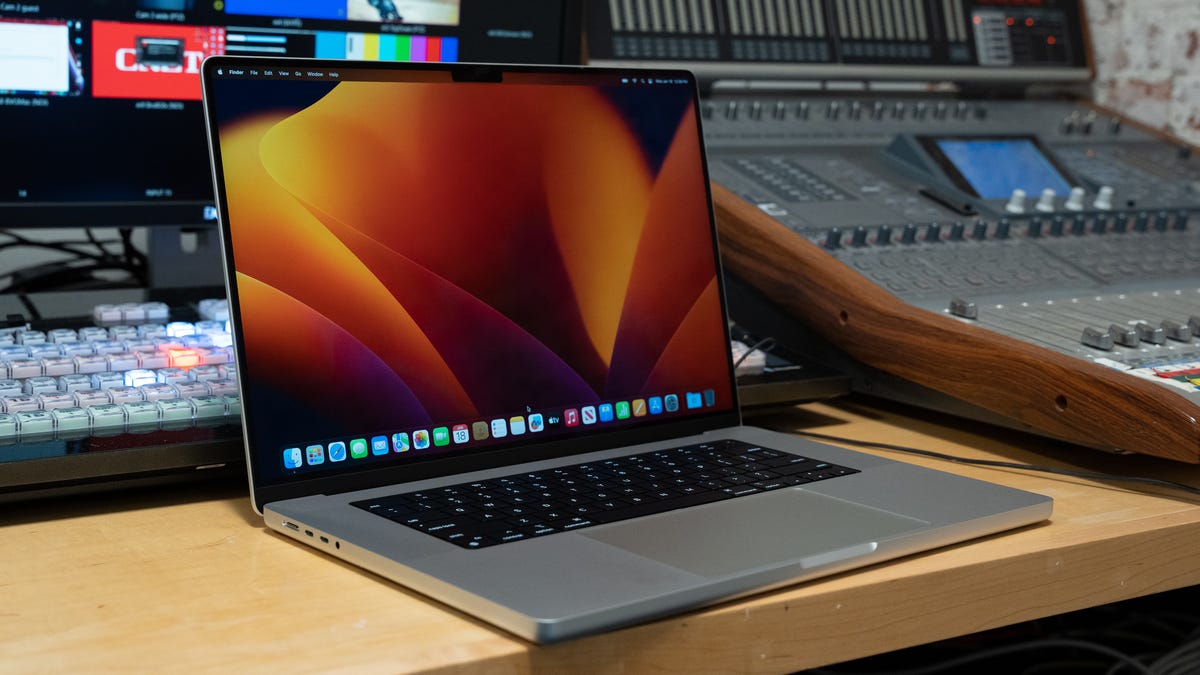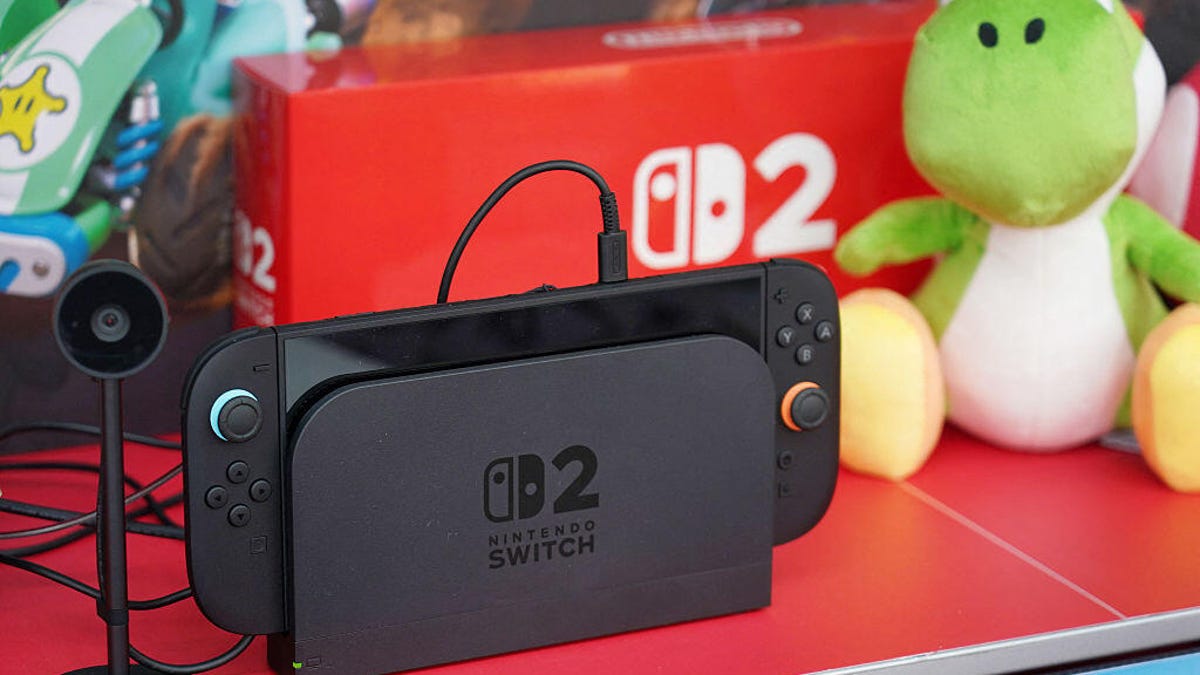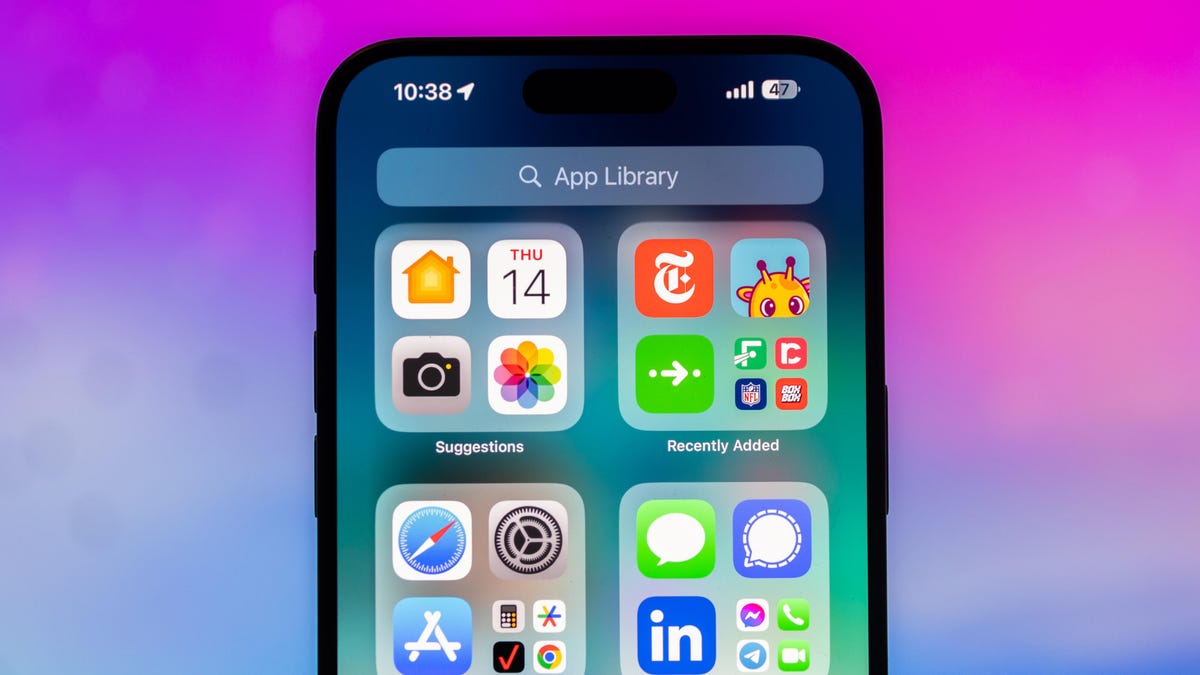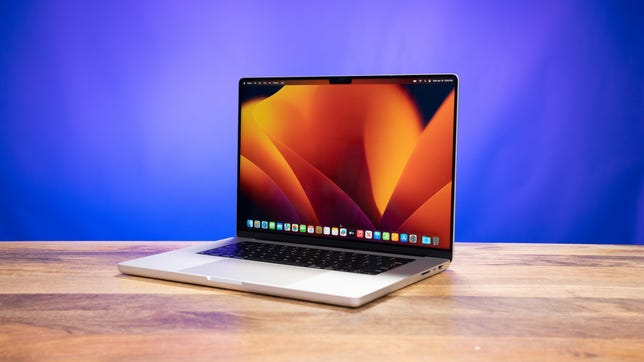Technologies
M2 Pro MacBook Pro 16 Review: Apple Amps Up Its Creative Workhorse
Upgraded Wi-Fi and new M2 Pro and M2 Max processors deliver a nice generation-over-generation uptick.

Editor’s note: Our testing of the 2023 MacBook Pro 16 is ongoing; we’ll update this review when we’ve completed our evaluation.
Apple’s 2023 update to its flagship MacBook Pro 16-inch line follows the company’s usual MO. It offers a modest refresh from the more significantly redesigned 2021 model; notably, upgrades to the latest generation of M2-class processors, Wi-Fi 6E and HDMI 2.1, which means support for displays up to 8K/60Hz and 4K/240Hz as well as variable refresh rates. The combination of the old and new enhances the veteran laptop’s chops as a powerhouse computer for creation and development work.
These updates add to the more significant noncosmetic changes introduced with the 2021 MacBook Pro 16: We see a return of the HDMI connector, SDXC card slot, MagSafe charging connector and function key row on the keyboard because buh-bye Touch Bar. There’s also a vastly improved 1080p webcam and, the biggie, a migration of the line to Apple’s own silicon for the CPU with integrated GPU.
Like
- Fast with solid battery life
- Good, bright screen
- Wi-Fi 6E and HDMI 2.1 support
Don’t Like
- Heavy
- That notch
I won’t apply the marketing kiss of death and call it a «mobile workstation,» but yeah, that’s what it is. And that’s the primary way to justify the price, especially for the $3,499 configuration we’re testing and the types of applications Apple highlights performance for. (Apple’s aiming for the market I tend to mentally classify as «people who create shows for Apple TV Plus, Disney and the like.»)
There’s a much easier case to make for gaming laptops at that price, but sorry, Apple, still no. And given the entry price of $2,499, there’s a big hole for recommendations of a big-screen Apple laptop, for people who just want to be able to see more but don’t need performance beyond a MacBook Air.
Furthermore, that base configuration includes only a 512GB SSD. The base M2 Pro processor with 12 CPU cores (8 performance and 4 efficiency) and 19 GPU cores delivers fine performance for a lot of photo editing — I’d probably go higher for, say, medium format work. If you’re performing tasks that require the outlay for the laptop, you likely need at least 1TB SSD, and would probably benefit from upping to 32GB RAM. That bumps the price to almost $3,100.
Going all-out with the configuration, with an M2 Max (12 core CPU/38 core GPU) 96GB memory and 8TB SSD will run $6,499, which is a lot to swallow and excessive for the components, at least on paper. It’s a little more annoying that it doesn’t support 128GB RAM, but 96GB is still more than the last model’s 64GB maximum. I suppose more memory will have to wait for the equivalent of an Ultra chip, though that never made it into a laptop for the M1 generation.
The nice thing, though, is that performance for Apple’s CPUs is consistent across the lines, meaning the same chip delivers roughly comparable performance in a similarly equipped Mac Mini as it does in a MacBook Pro. On one hand, It would be nice if you got better performance on more expensive hardware, but the consistency makes buying decisions a little easier.
Read more: M2 Mac Mini 2023 Review: Apple Adds M2 and M2 Pro Chips to This Tiny Desktop
Design and performance
As mentioned earlier, the design hasn’t changed since we first saw it in 2021, and hasn’t started looking old yet. I love the features Apple’s brought back, especially the dedicated function key row and SD card slot, and the screen seems to still be excellent, at least pending my formal screen testing.
I do have some nitpicks. The notch at the top of the screen bothers me, though not nearly as much as it does on the iPhone — there it’s functionally intrusive because you’re actually losing space to display necessary information, but here it’s just aesthetically annoying. And I’m probably in the minority on this, but I don’t like MagSafe power connectors and I never have. While I think magnets usually make everything better, with MagSafe the power cord disconnects more frequently than I need it to, like if I put it down on the bed when it’s plugged in. (A power corollary to that is I’m really ready for Apple to redesign its awful brick-with-plug that requires babying to remain in almost any outlet I’ve ever plugged it into.) Plus, despite the previous generation’s webcam upgrade, there’s still no Face ID support.
I still have a lot of specialty testing to do — important aspects, notably the video editing and encoding performance, VRR over HDMI and the updated neural engine improvements — as well as several more battery test runs. But I do have a handful of observations based on what I’ve already run.
I had some initial issues with Wi-Fi 6E, such as connecting to and staying connected to my router (an Asus ROG Rapture GT-AXE11000E), but finally narrowed them down to a default. After I switched «wake for network access» in the battery settings from «only on power adapter» to «always,» it connected immediately and stayed connected. It’s been bulletproof ever since. I don’t know yet what impact that might have on battery life.
I generally get more reliable performance from 6E than 6, at least in my environment. For instance, a casual Speedtest run delivered a consistent 483Mbps download on 6E but an average 392Mbps on 6 (for 400Mbps service). The latter started higher but dropped partway through as well.
MacOS has two power settings for on-battery performance. The default leaves the system running at full power draw, as if it was plugged in. On that setting, you’ll get nearly identical speed to when it’s plugged in. But also, surprisingly, excellent battery life, about 19.5 hours on the one run I had time to perform. One could assume the lower power setting will increase that.
On the low power setting intended to run more quietly and for longer, single core performance dropped the most between power settings (no worse than Intel, though). GPU showed the least differential, though the tests I ran aren’t terribly stressful GPU tests. Multicore differences fell about where I expected, and I’ve yet to figure out what my web (HTML5, Javascript and WebAssembly) reveal. It does run notably cooler, which is a nice boon if you actually use it as a laptop on your lap. It’s also on the heavy side, but, unfortunately, that’s how these dense power laptops roll.
Unless you need every little speed increase you can get, you needn’t feel the FOMO if you’ve got the last-generation MacBook Pro 16. But if you didn’t jump onto the Apple Silicon bandwagon last go-round and don’t rely on any applications that will only run on the Intel processors, it’s probably smart to consider the upgrade this time around. As for more specific recommendations, that will require more specific testing. Stay tuned.
Originally published 9:00am ET Jan 23, 2023 and updated periodically.
Preliminary performance tests
Technologies
Need Gift Ideas? Google’s Holiday 100 Shopping List Includes Switch 2, Home Movie Projectors
You can shell out hundreds for a new gaming console or spend less on classic games and backpack charms.

The spooky season has just ended, and Google is already turning its attention to holiday shopping. The search giant just released its annual list of 100 top holiday gift ideas based on the hottest trends of 2025.
The Google Holiday 100 list is an annual shopping guide compiled from searches for various products conducted between May and September. Using that data, Google creates a catalog of the year’s top trending gift ideas across various industries, including tech, toys, fashion and wellness. You can view the entire Google Holiday 100 list here.
Don’t miss any of our unbiased tech content and lab-based reviews. Add CNET as a preferred Google source.
Nintendo Switch 2
This year’s breakaway technology hit was the Switch 2, Nintendo’s latest family-friendly video games console. Unsurprisingly, it appears on 2025’s Holiday 100 list. The console was released in June and has sold more than 10 million units thus far, with Nintendo hiking up sales expectations even among uncertain economic conditions and tariff pricing.
Google Pixel Watch 4
The Google Pixel Watch 4 is a standout wearable that made the Holiday 100 list. Its inclusion isn’t just Google stuffing its own product into a list. If you’re buying a gift for fitness-focused folks, CNET’s Vanessa Hand Orellana wrote that the latest iteration of Google’s smartwatch «hits a sweet spot between universally appealing design, seamless compatibility with the Android ecosystem, potentially life-saving safety features and robust health and fitness tracking.»
Red-light face masks
Your algorithm may have served you up a boatload of red light therapy content from health and beauty influencers this year. Search volume for red light masks has spiked in the past few months, so the LED masks have been included in the Holiday 100 buying guide this year. Just make sure to purchase one of the best FDA-approved masks.
Movie projectors to backpack charms
If you’re looking for gifts across other categories, Google has some top 2025 searches for big and small. Home theaters are apparently in this year, as searches for movie projectors spiked by a whopping 945%. Searches for backpack charms also hit an all-time high this year, so those are a safe bet for stocking stuffing for any young kids.
Checkers (the actual board game)
Even though many gifts given out at Christmas this year will surely be high-tech gadgets and accessories, the board game of checkers is also on the list. There’s always room for the classics.
As you prepare for the Herculean task of yearly holiday shopping, Google’s Holiday 100 is a good place to start. But if you’re looking to beat the crowd on the best tech deals around, CNET is already collecting pre-Black Friday deals.
Technologies
Look Up Tonight to Spot November’s Supermoon, the Brightest Moon of 2025
Has the moon been looking brighter and bigger to you for the past few days? Here’s why this month’s supermoon is even more super.

It’s already a great month for skygazers, with a trio of meteor showers and the return of the northern hemisphere winter constellations. On Tuesday night, it also features the second of four supermoons in a row. This month’s supermoon will happen on Nov. 4-5, and November’s beaver moon is special because it’ll be the brightest full moon of 2025.
In addition to being a supermoon, November’s full moon is known as the beaver moon. There is some debate as to why it was named this way. Some believe that this was the best time of year in the old days to set beaver traps to get pelts for winter clothing. Others believe that it coincides with the busiest part of the year for beavers, who are now stocking their lodges with supplies for the upcoming winter.
Here’s what time it’ll look its biggest and brightest, and what else you need to know about the November supermoon.
Don’t miss any of our unbiased tech content and lab-based reviews. Add CNET as a preferred Google source.
The brightest supermoon: When’s the best time to see it?
The moon will reach peak illumination at 8:19 a.m. ET on Nov. 5, making the evening of Nov. 4 and the morning of Nov. 5 the best times to view the moon.
Since moon phases shift slowly, the moon will appear almost full for nearly a week. If you are unable to view the full moon on its best night due to weather or other reasons, you can still see a mostly full moon at any point from Nov. 3 to Nov. 8.
For all of those days, the moon will be measurably brighter in the night sky compared to any other full moon in 2025. The reason for this is because of the moon’s elliptical orbit. Since it’s not a perfect circle, the moon’s 27.3-day journey around the Earth brings it closer to us on some days, a phenomenon known as perigee. If there is a full moon during this time, it’s branded as a «perigean full moon,» which you may know better as a supermoon.
Not all supermoons are equal, and November’s will be a little more special than others. According to The Farmer’s Almanac, the beaver moon will be a scant 221,817 miles away from Earth, making it the closest full moon of the year. That means it’ll be the biggest and brightest of the year.
In practice, the differences are fairly minor and likely won’t be visible to the naked eye when compared side by side to other supermoons. A supermoon is only about 7% larger than a regular full moon. According to NASA, the biggest difference is when comparing a supermoon to a micromoon, where a supermoon will be about 14% larger and 30% brighter. So, if you notice that your backyard patio is lit up more than usual, it’s because of the supermoon.
Also due to the moon’s orbit, November will also bring a micro new moon, which means the moon will be as far away from the Earth as it can get — a phenomenon known as apogee. November’s new moon occurs on Nov. 20, but you won’t be able to see it.
Technologies
Stay Informed About Your Flights This Holiday Season With Your iPhone’s Tracker
Your iPhone is hiding a flight tracker. Here’s how it works.

Thanksgiving is only a few short weeks away and if you plan on flying during the holiday season, keeping up-to-date on changes to your flights is crucial. Airports can be hectic during any holiday, but with the government shutdown continuing, flights are liable to change or be cancelled more often.
Luckily, it’s never been easier to get up-to-date information about your flight. For starters, your airline probably has an app, and if not, you can check its website. If you’re in a hurry, you can Google the flight number. Or you can just use your iPhone’s built-in flight tracker that’s sneakily tucked away.
That’s right: Your iPhone has a flight tracker that you may have never known about. It’s there for when it’s needed. Below, we’ll show you have to access it in not one, but two places, so you never have to go hunting for your flight info elsewhere again.
Don’t miss any of our unbiased tech content and lab-based reviews. Add CNET as a preferred Google source on Chrome.
For more on the iPhone, check out everything Apple announced at WWDC 2025.
How to track your flight via iMessage
Before we start, there are a few prerequisites you must meet:
- Make sure iMessage is enabled (it doesn’t work with SMS/MMS).
- You’ll need your flight number somewhere in your text messages, whether you’ve sent that information to someone (even yourself) or it’s been sent to you.
- The flight number must be sent in this format: [Airline] [Flight number], for example, American Airlines 9707.
Launch the native Messages app on your iPhone and open the text message thread that contains your flight information. You’ll know the flight tracker feature works when the text with the flight information appears underlined, which means it’s actionable and you can tap on it.
If your flight is still several months away or it’s already passed, you might see a message that says, «Flight information unavailable.» You might also see another flight that’s not yours because airlines recycle flight numbers.
You can check your flight status from Spotlight Search, too
If getting your flight information from Messages wasn’t easy enough, you can also grab the details right from your iPhone’s home screen by swiping down and adding your flight number into Spotlight Search. Even better, this works with Spotlight Search on your Mac computer, too.
How to access the hidden flight tracker
Although the airline name/flight number format highlighted above is the best way to go, there are other texting options that will lead you to the same result. So let’s say we stick with American Airlines 9707, other options that may bring up the flight tracker include:
- AmericanAirlines9707 (no spaces)
- AmericanAirlines 9707 (only one space)
- AA9707 (airline name is abbreviated and no space)
- AA 9707 (abbreviated and space)
I would suggest you keep the airline name spelled out completely and add a space between the two pieces of information — like in the previous section — because for some airlines, these alternative options may not work.
Real-time flight tracking
Once everything is set, tap on the flight information in your text messages. If the feature works correctly, you should see the following two options appear in a quick-action menu:
- Preview Flight: View the flight’s details. Tap this to view more information about the flight.
- Copy Flight Code: Copy the flight code to your clipboard (in case you want to send your flight details to someone else via text or email).
If you select Preview Flight, at the top of the window, you’ll see the best part of this feature: a real-time flight tracker map. A line will connect the two destinations, and a tiny airplane will move between them, indicating where the flight is at that exact moment.
Underneath the map, you’ll see important flight information:
- Airline name and flight number
- Flight status (arriving on time, delayed, canceled, etc.)
- Terminal and gate numbers (for arrival and departure)
- Arrival and departure time
- Flight duration
- Baggage claim (the number of the baggage carousel)
If you swipe left on the bottom half of the flight tracker, you can switch between flights, but only if there’s a return flight.
For more travel tips, don’t miss our test on whether AI can help you fly more sustainably.
-

 Technologies3 года ago
Technologies3 года agoTech Companies Need to Be Held Accountable for Security, Experts Say
-

 Technologies3 года ago
Technologies3 года agoBest Handheld Game Console in 2023
-

 Technologies3 года ago
Technologies3 года agoTighten Up Your VR Game With the Best Head Straps for Quest 2
-

 Technologies4 года ago
Technologies4 года agoVerum, Wickr and Threema: next generation secured messengers
-

 Technologies4 года ago
Technologies4 года agoBlack Friday 2021: The best deals on TVs, headphones, kitchenware, and more
-

 Technologies4 года ago
Technologies4 года agoGoogle to require vaccinations as Silicon Valley rethinks return-to-office policies
-

 Technologies4 года ago
Technologies4 года agoOlivia Harlan Dekker for Verum Messenger
-

 Technologies4 года ago
Technologies4 года agoiPhone 13 event: How to watch Apple’s big announcement tomorrow

